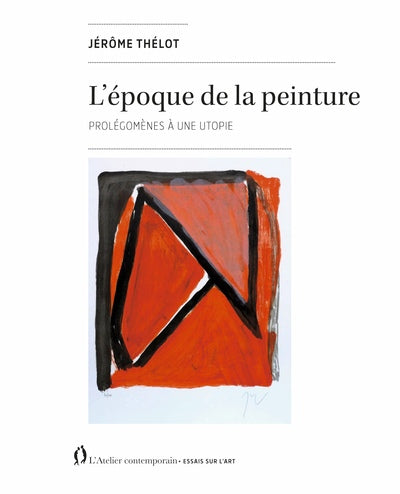L'époque de la peinture
- Authors: De (auteur) Jérôme Thélot
- Publishers: WORKSHOP CONT
- Date of Publication: 2024-02-16
- Pages: 112
- Dimensions: 205mm x 166mm
Against the grain of our times, that of technology, of reason
calculator, logics of domination which interfere in all the
dimensions of life, an era that has its distant origins in the
Neolithic period where agriculture and livestock breeding were invented, Jérôme Thélot proposes
"to form the utopia of a radical new beginning." Remembering the invention
Painting in the secret of Paleolithic caves, and its function
founder for millennia, its paradoxical project is motivated by a
stubborn hope, that of inaugurating a new era of painting, that
prophesy in their own way certain major works like those of Giorgio
Morandi or Edward Hopper. Because "it is absolutely worth it, at the moment
catastrophic situation where we are of a possible disappearance of terrestrial life, of
to scrutinize anew the content of the painting", its content "in truth, in
justice and goodness." The era of painting would be that of another paradigm
ethics and politics, of a new gentleness in our relationship with beings and
things, which would defuse the mechanisms of violence and destruction governing
contemporary history. "The question of whether the utopia of which this book
The question whether the formula of the prolegomena is plausible or not is not asked: rather
Is it a question of exposing the articulations of a philosophy which defends the idea of a
improbable time when painting would have done, or would do, our salvation. Also this
book sketches an open myth that he had returned or would return to a
restart of the history of conjugation. A ''myth'': a story that founds a
era and decides its meaning. It begins with a genesis, then develops from
mythemes in mythemes. Which tell, successively, with the gift of ''The
Roman Charity'' the pictorial invention of subjectivity; with the debate between
Baudelaire and Manet the overcoming of sacrificial representation; then,
with the compassionate art of Irene caring for Sebastian, the fusion of eros and agape.
Then, based on these prerequisites, the myth gathers the power of
the resumption of painting beyond the devastations of the time of the
technique: in particular, in his ἐποχή in Bram van Velde reducing the
landscape to his previous life. Finally, he recognizes in the gaiety also original
that fear the intimate emotional disposition to this power, and he tells
on the stage of utopia the very simple destiny of an artist who embodies it. This
are thus around forty Western works, from Holbein to Soutine, from
Zurabaran to Morandi, from Frans Hals to Hopper, who encourage the association here,
almost the identification of painting with hope." (JT)
Share

